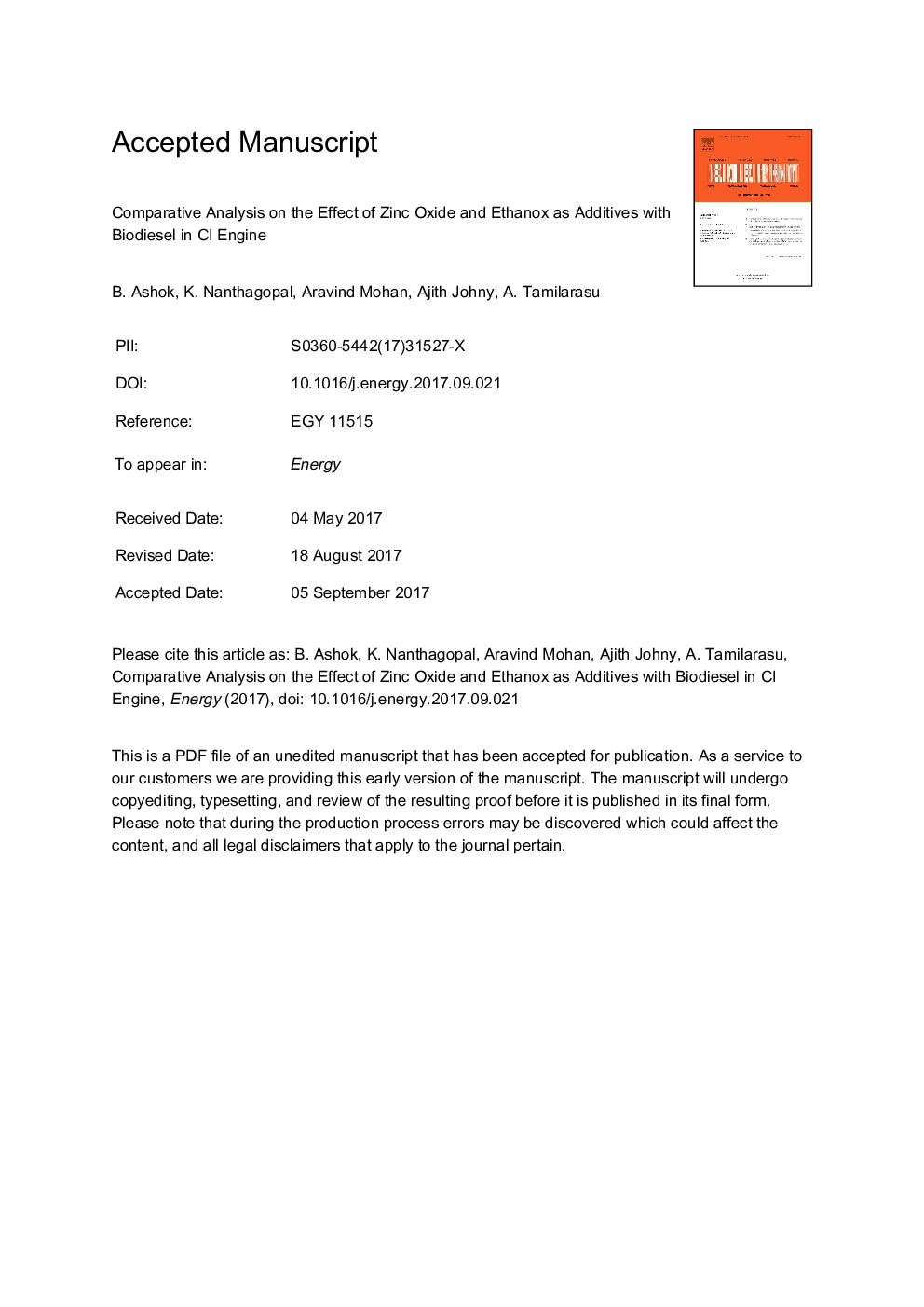| Article ID | Journal | Published Year | Pages | File Type |
|---|---|---|---|---|
| 5475415 | Energy | 2017 | 30 Pages |
Abstract
In the present experimental study, CI engine is made to run on 100% Calophyllum Inophyllum Methly Ester (CIME) biodiesel and the same dozed with fuel additives. The study mainly focuses on the influence of two types of fuel additives namely Zinc oxide (ZnO) which is a metal oxide nanoparticle and Ethanox which is an antioxidant. ZnO was added to CIME in the form of nanofluid at different constituent levels of 50Â ppm and 10Â ppm while Ethanox was added at concentration levels of 200Â ppm and 500Â ppm. Addition of 100Â ppm of ZnO improves the efficiency by 4.7% and 12.6% reduction of NOx at full load. These improvements arise due to the catalytic effect of nanoparticle and micro explosion of water molecules present in the fuel. Antioxidants inhibit the formation of free radicals, Ethanox was found to be better fuel additives in terms of NOx reduction and 500Â ppm of Ethanox results in maximum decrease of 17.8%. But this improvement was found to be achieved at the expense of HC and CO. A slight improvement achieved in efficiency for fuel samples containing antioxidant can be attributed to the volumetric effect which arises due to unmodified injection rate and increase in density of the fuel.
Related Topics
Physical Sciences and Engineering
Energy
Energy (General)
Authors
B. Ashok, K. Nanthagopal, Aravind Mohan, Ajith Johny, A. Tamilarasu,
